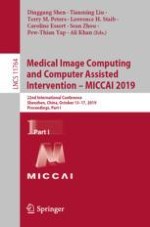2019 | OriginalPaper | Chapter
ConCORDe-Net: Cell Count Regularized Convolutional Neural Network for Cell Detection in Multiplex Immunohistochemistry Images
Authors : Yeman Brhane Hagos, Priya Lakshmi Narayanan, Ayse U. Akarca, Teresa Marafioti, Yinyin Yuan
Published in: Medical Image Computing and Computer Assisted Intervention – MICCAI 2019
Publisher: Springer International Publishing
Activate our intelligent search to find suitable subject content or patents.
Select sections of text to find matching patents with Artificial Intelligence. powered by
Select sections of text to find additional relevant content using AI-assisted search. powered by
